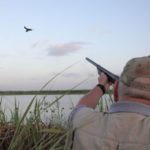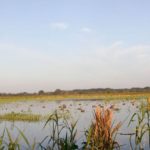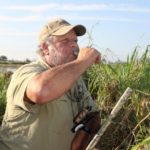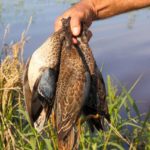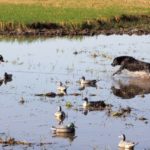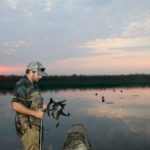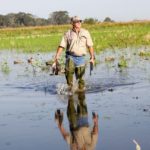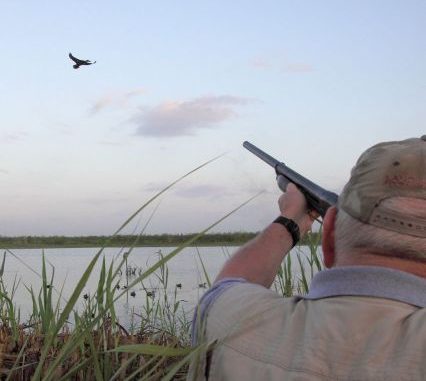
Last year’s teal season began with high expectations, but hunters either had great shooting or struggled to see a few birds. But this year promises to be better — if the birds fly south.
“Hmmm — six blue-winged teal would make for a nice day and plenty to eat,” I thought to myself the night before the opening day of the 2013 teal season. “Seriously? Six birds. One half dozen. Who’d of ever of thought the day would come?”
But leading up to the season at the Louisiana Outdoor Writers Association’s annual conference I heard Louisiana Department of Wildlife and Fisheries Waterfowl Study Leader Larry Reynolds say it.
It was big news. There were an estimated 7.7 million blue-winged teal counted on the prairie pothole region the annual breeding population and habitat survey.
And though the numbers were down 6 percent from 2012, blue-winged teal remained a whopping 60 percent above the long-term average — and that would provide hunters with another 16-day liberal season.
But more significantly, the bag limit would change from four to six birds after a long-awaited United States Fish and Wildlife Service study indicated the species could handle the additional harvest.
This was an OMG moment. I know my social media threads, made up of a lot of waterfowl hunters, were abuzz as word spread across the Bayou State.
What’s more, the black-iron pots were being broken out and seasoned in preparation for some fine eating.
Rick Moore of Moore Farms had been inviting me to come out and teal hunt with him for a couple years. When he and I talked prior to the season, he let me know opening weekend was always dedicated to his clientele.
But if I had a day during the week I could come over; he’d no doubt have a blind available that he and a good friend of his, Rick Sittig, could share. Sittig also happened to be one of his guides.
Deciding to take Moore up on a weekday hunt, my first week of teal-season plan was complete. On opening day I’d hunt my lease, which as the crow flies is only a couple of miles north of the Atchafalaya Delta Wildlife Management Area with my oldest son Jason. I figured with all of the shooting and pressure from out on the Wax Delta, we’d get our shots.
Then on Tuesday I’d hunt with Moore and Sittig.
A strange thing happened for much of Louisiana leading up to the season. Just days prior to the teal opener the Louisiana Department of Wildlife and Fisheries completed their September waterfowl population flyover estimates, and things weren’t looking good, according to the numbers.
The survey reported the 50,000 blue-winged teal estimated was 74 percent lower than the 2012 estimate and 79 percent below the long-term average of 238,000 birds.
Worse, the estimate was the lowest on record for the survey.
Sometimes the difference one season to the next simply boils down to the haves and have-nots. The aerial survey indicated the largest concentrations of teal in Southwest Louisiana were seen in the marshes between Cameron and Creole and in a flooded agricultural field northwest of Welch.
Moore Farms just happens to be located in the Welch area just north of I-10.
By contrast no concentrations were seen in the southeastern region of the state.
Moore, who has 12 blinds available to hunters on his rice and crawfish farm, clearly was one of the haves.
“We shot 175 teal this morning,” he reported the evening of opening day. “So we did pretty well. Thirty guys hunted, and nearly everyone limited. Most were in between 8:30 and 9 a.m.”
My opening-day plan was a well-thought-out one. But, by hunting near the Atchafalaya Delta WMA and well east of where the better concentrations were noted in the LDWF report, it was clearly a case of the have-nots.
To make matters worse, during the week several large rafts of water hyacinths pushed by southerly winds made their way into our pond. Our available acreage was reduced dramatically, and ultimately the directions of our shots were impeded, as well.
What’s more, since neither my son nor I owned a lab or a surface-drive boat and motor, we weren’t about to knock a bird down into the invasive growth, cripple and lose it.
By legal shooting light, we could hear sporadic shooting south of us on the Wax Lake delta. Just as planned, pressured teal came into our pond.
Disgusted, we passed up a couple of bunches that flew within shotgun range behind us and off to one side — over the hyacinths.
Our chances finally came when a half dozen blue-winged teal came diving into our decoy spread, where we put a pair on the water.
We scratched on another pass. And knocked down one more bird on still yet another pass.
After that, we watched a flock here and a flock there flying supersonic out of shotgun range.
A friend, Corey Toups, messaged me that he was hunting with his girlfriend and a buddy out on the delta opening day.
“We had a couple of teal sit in the decoys and visited before legal shooting time,” said Toups, who is a Patterson Chapter Ducks Unlimited committee member. “We bagged five teal and knocked down one other that left my lab in confusion after diving into some thick grass, never to be seen again.
“It may not seem like the best bag to most, but compared to the teal season we had last year, I was happy to share the five-bird stringer with a buddy and my girlfriend.”
When Tuesday rolled around, I was ready for some better shooting on Moore Farms. Moore introduced me to Sittig and said he would join us later in the blind after he got his other hunters situated.
Sittig told me that Moore had started him out hunting when the two met in the fourth grade. Forty years later, Sittig lives and works in Texas, and the two are best of friends. Sittig takes time off work to guide for Moore during duck season.
What makes the southwest part of the state so good year in and year out? Sittig feels it’s simply the agriculture.
“I think it’s just the number of rice fields and crawfish ponds in this area of Jefferson Davis Parish,” Sittig said. “People start flooding their ponds early for crawfish, and the ducks have the water and the feed to come to. It has a lot of effect by stopping lots of teal that are coming down during the early season.
“We’ll come in and flood the rice ground that’s been cut and buffalo it. You should always leave a little stubble, though, because the teal really love it. As a result, these low-lying agricultural areas have always done extremely well.”
Moore’s guides put out about two dozen decoys on each side of the pit blinds they hunt out of. They also put them in little groups with shooting lanes or little pot holes between the decoys for blue-wings to land in order to provide better shooting opportunities.
As it got a little past legal shooting light, we finally could see and hear what was happening. A burst of gunfire coming from one of Moore’s other blinds sounded like they were really getting after them.
Minutes later another volley from the same blind made us anxious, to say the least, as we had yet to fire a shot. We watched some flights trading north and south that seemed uninterested in our field.
Moore called, attempting to get a couple of bunches of birds to circle back without success. I’ve always questioned the impact of calling teal and its effectiveness, but Moore feels differently on the subject.
“Calling during the teal season is still important, I think — not as much as big ducks maybe, but still important to get them to make that curve,” he explained. “Some morning, it’s going to work better than other mornings, but it’s still very important.
“Another thing is when you call, don’t call too much; that’s the biggest mistake most people make.”
Finally, our opportunity came when a bunch of birds strafed our field and made a hard turn after Moore called. The birds came screaming in, and the three of us emptied our guns.
We knocked down three birds, but should have had more — a that, for myself, I chalked up to being the first shots had I fired since rabbit season ended some eight months prior.
As fate would have it, things got slow. The huge number of teal Moore had opening weekend had dwindled to a handful by comparison. What concentrations of blue-winged teal the southwest region of the state had prior to the season were now scattered to the four winds or in Mexico.
The 2013 teal season became the story of two seasons: the slow first half and the improved second half. By all accounts teal arrived later than normal, and though six-bird limits would have been amazing, many hunters struggled to kill four teal — the bag limit in past years.
But the promise of another year brings forth its own optimism or pessimism.
Blue-winged teal population estimates a couple of months back showed their population numbers were a whopping 75 percent above the long-term average for the species. With 8.5 million birds estimated, the number was 10 percent higher than 2013, when birds seemed to show up late during the teal season.
Nonetheless, no mater how many birds decide to show up this month, teal hunters will get 16 days to hunt and a six-bird bag limit.
Hopefully, with such high numbers, the 2014 special teal season won’t be about the haves and have-nots.
